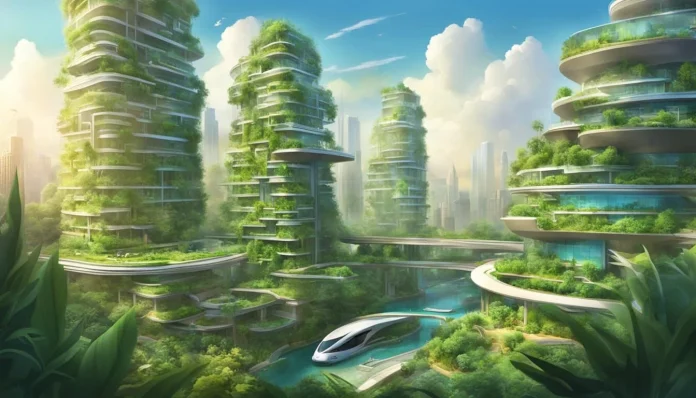Synopsis: As the world rapidly urbanizes, cities are becoming key battlegrounds in the fight against climate change. This article explores how urban areas can transform into green, biodiverse spaces that benefit both people and the planet.
Introduction: By 2050, nearly 70% of the global population is expected to live in urban areas. This shift presents significant environmental challenges, including air pollution, heat islands, and biodiversity loss. However, cities also offer unparalleled opportunities for sustainable innovation. By reimagining urban spaces as ecosystems, we can create healthier, more resilient environments.
Green City Models: Cities like Singapore, Copenhagen, and Amsterdam have pioneered green urban planning. Singapore’s Gardens by the Bay and extensive vertical forests exemplify how nature can be seamlessly integrated into dense urban environments. Copenhagen’s cycling infrastructure and green rooftops showcase how sustainable transport and architecture reduce emissions and enhance quality of life.
Urban Rewilding: Urban rewilding involves restoring natural ecosystems within cityscapes. This can include planting native vegetation, creating green corridors, and rehabilitating waterways. Rewilding enhances biodiversity, improves air quality, and mitigates urban heat. In Barcelona, the “Green Corridors” initiative aims to connect parks and forests, providing habitats for wildlife and green spaces for residents.
Innovative Architecture: Green architecture, such as Bosco Verticale in Milan, exemplifies how buildings can function as living ecosystems. Vertical forests and green roofs not only absorb CO2 but also regulate temperatures and reduce energy consumption. These innovations reflect a shift towards biophilic design, which prioritizes harmony between built environments and nature.
Policy and Community Engagement: Urban transformation requires collaboration between policymakers, architects, and local communities. Inclusive planning ensures that green initiatives benefit all citizens, addressing environmental justice concerns. Incentivizing sustainable construction, expanding public green spaces, and promoting community gardens are actionable steps toward greener cities.
